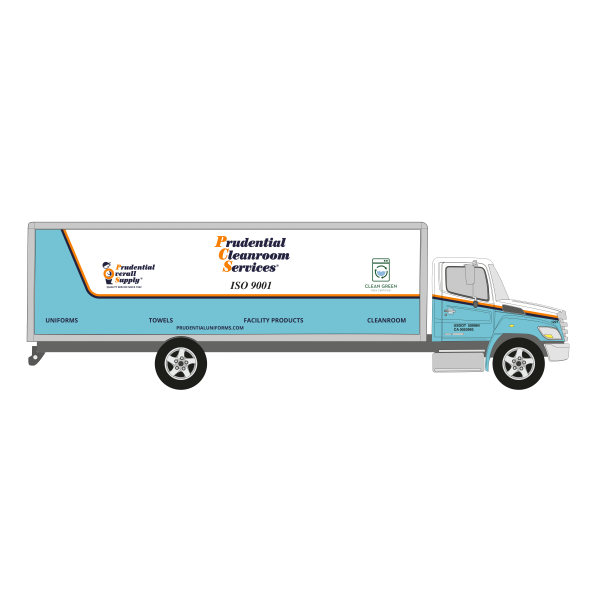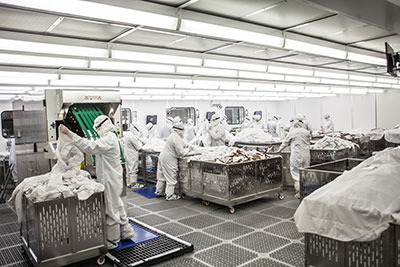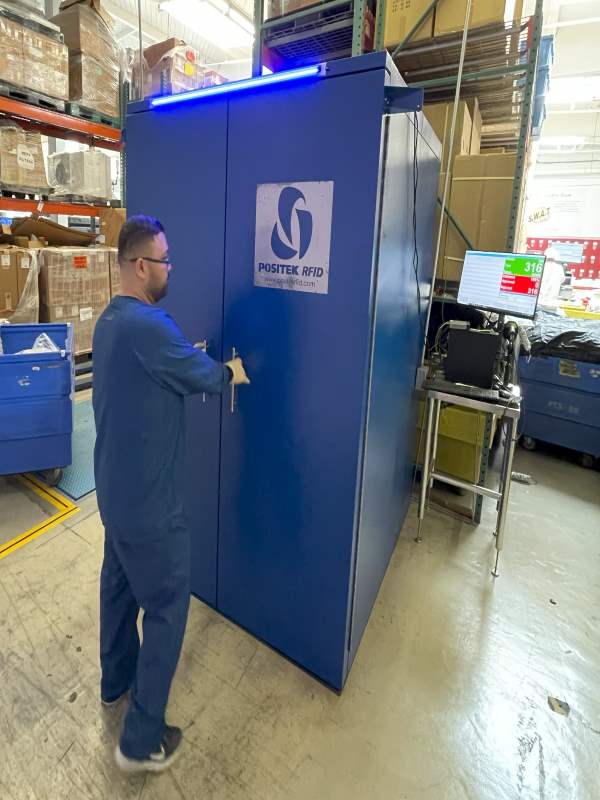A message from our CEO
“Prudential’s technological innovation will continue to set us apart from our competition. RFID is the most modern method of uniform tracking, giving our customers far superior insight into the location of uniforms and history of use.“
CEO, Prudential Overall Supply

A message from our CEO
“Prudential’s technological innovation will continue to set us apart from our competition. RFID is the most modern method of uniform tracking, giving our customers far superior insight into the location of uniforms and history of use.“
CEO, Prudential Overall Supply

Benefits of RFID
Did You Know?
RFID tags are completely harmless. They use similar technology as a credit card or an employee ID badge.
ISO Compliant
With ISO Compliant multi-read, Ultra High Frequency (UHF-866-928MHZ) technology, it is possible to read an entire bundle at once
What is RFID?
Radio-Frequency Identification
Radio-frequency identification uses electromagnetic fields to automatically identify and track tags attached to objects. The RFID system consists of a tiny passive radio transponder that lies dormant until activated by a reader.

RFID Applications:
Although RFID technology has been in use since the 1940’s, the demand for RFID equipment is increasing rapidly, in part due mandates by the US Department of Defense and large chain stores requiring their suppliers to enable products to be traceable by RFID. RFID is a Passive System.
Where RFID is used in daily life:
- Apple pay
- Hotel room access
- Free-way toll booths
- Security tag system at department store
RFID Technology is used in many industries:
- Inventory management– Asset tracking
- Controlling access to restricted areas
- ID Badging
- Supply chain management
- Counterfeit prevention (e.g. in the pharmaceutical industry)
RFID Garment Tracking System*
-

1. Pick Up
Your Customer Sales Representative carries a device to facilitate any service adjustment requests. The invoice is completed on the device allowing your CSR to make requested adjustments on-site. An authorized signature is then captured.
-

2. Garments Arrive At Facility
Soiled garments are pushed into facility by your Customer Sales Representative with RFID tags.
-

3. Cart Identification
Customer Service Representative attaches a soil tag to the cart which shows customer’s information and product weight.
-

4. Place Into Scan Machine
The cart is pushed into the bulk RFID scan machine to record quantity picked up.
-

5. Garment In-Scanned
Each garment is pulled from the cart and scanned into the RFID reader and individually inspected.
-

6. Soil Inspection
100% inspection for any necessary repairs and sorted by customers’ specified processing needs in ISO Class 8 controlled environment. Process performed on light tables to help inspector quickly identify actionable items.
-

7. Priority Repair Station
Prudential is committed to maximizing garment inventory life. PCS’ documented repair process fulfills this commitment, and repairs are logged into the system through RFID.
-

8. Wash
PCS developed a customized pass through washing machine design which moves garments into the ISO Class 4 controlled environment after laundering. Washer internal drum surface areas are 316L stainless steel with Teflon seals and bearings. Deionized water is delivered through PVDF system. Computerized liquid injection system. Special processing requirements with segmented loads.
-

9. Dry
Exclusively developed PCS customized pass through dryer design allows garments to move garments directly into ISO Class 3 cleanroom controlled environment. Dryer internal drum surfaces are 316L stainless steel with Teflon seals and bearings. Temperature & humidity controlled ULPA filtered @ 99.9995%.
-

10. Quality Assurance Personnel
Overview of ISO Class 3 Quality Assurance Test Lab. All process data collected within the lab is entered into a statistical process control (SPC) data base. Monthly SPC charts are maintained on all critical plant processes. Quality Assurance Personnel perform ASTM F-51 testing using microscopic inspection technique; washloads are sampled and tested for particles and fibers; perform incoming product inspection; perform Helmke Drum Test, this method tests the total releasable particles on a garment.
-

11. Testing
All PCS facilities have an ISO Class 3 Garment System Test Chamber (Body Box). The Body Box is available for our customers to use. During Body Box testing personnel engage in predetermined exercise. This test challenges the entire garment system for particle containment capabilities.
-

12. Folded & Packaged
Folding and Packaging is performed in ISO Class 3 environment. Clean garments are folded, packaged, and sealed and scanned in preparation for testing and final distribution. Bags are hermetically sealed with easy open bags.
-

13. Bagged
All customer’s garments are placed into over-bags which are then placed into cart for the Quality Assurance Inspector to move the fully cleaned customer garments in cart to the next step.
-

14. Out-Scan
The cart that is filled with cleaned customer garments is placed into the final RFID scan machine. Final RFID scan confirms that 100% of customer’s garments are in the cart ready to be returned to customer’s facility.
-

15. Customer Distribution
Garments distributed to end user gowning area as needed. PCS customers have never experienced an interruption in production due to a PCS delivery incursion.
-

16. Delivery
Is there anything else we can do for you today?
*RFID tags are being applied for new accounts and for replacements for existing accounts. This process will continue until all non-sterile garments are RFID tagged.